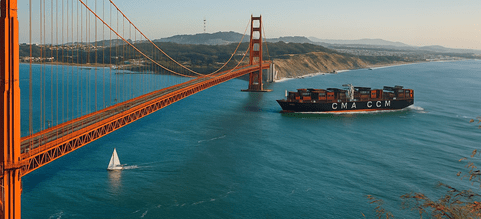United States to impose fees on large container ships
From April 2025, the United States will impose fees on large container ships. The aim: to boost American shipbuilding and curb Chinese influence in the global maritime sector. The measure is expected to have immediate financial implications for international supply chains.

The fees, introduced under the name USTR301, will initially apply only to vessels with a capacity exceeding 4,000 TEU, targeting the major players in international shipping. Ships falling within this category will face significant additional costs upon calling at a US port.
The key information (as currently known) briefly:
- Start and transition period: The fee officially came into effect on 17 April 2025. However, the first 180 days are exempt from charges.
- Full implementation: From 14 October 2025, the fee will be actively enforced. A base charge of $50 per net ton or $120 per container will apply, whichever amount is higher.
- Chinese shipping lines: Chinese carriers will face higher rates (approximately 2.75 times the standard charge), although the same implementation timeline and stages will apply.
- Large vessels only: Only container ships with a capacity greater than 4,000 TEU will be subject to this fee.
- Limitations: The fee will apply once per voyage and will be levied at the first US port of call. A maximum of five charges per vessel per year is allowed.
- Gradual increases: Further increases are scheduled for 2026, 2027, and 2028. By April 2028, the charge will rise to $140 per net ton.
- Exceptions: No charges will apply to bulk exports, empty vessels, or sailings within the Great Lakes, the Caribbean, and between US territories.
The financial impact is expected to be substantial. A simple calculation quickly reveals that for a vessel with a capacity of 15,000 TEU, the additional costs could exceed $1.8 million per rotation. This makes the regulation a potential gamechanger for many shipping lines. In theory, carriers could avoid the duties by commissioning new vessels from US shipyards. However, that scenario appears unrealistic for the time being: the American shipbuilding industry holds less than 1% of the global market share and lacks the infrastructure to scale up rapidly.
It is crucial to account for this structurally increasing cost component. Although the exact final terms may still be subject to change, this policy will have a lasting impact on the global logistics chain. DSV continues to closely monitor these developments and proactively advises customers on potential cost implications and logistics strategies.
Do you have questions about this topic or are you looking for strategic guidance? Please don’t hesitate to contact us.

